This will be a rather short post, but I did want to talk about writing blurbs. I know a lot of authors tend to think that once they've gotten past the initial query letter, they'll never have to face the horror of condensing their novel into two paragraphs again.
Unfortunately, that is not the case.
With both the blurb and the query, you're trying to sell your novel, which is long and deep and complicated, in just a few words, and I know that is hard. One thing I did that helped me immensely was browse in a bookstore. I wandered the fiction section and jotted down taglines and blurbs that caught my attention. Then I went home and analyzed them.
A good blurb is about communicating the essence of your story to the reader, not the details.
Let's look at mine. This was an incredibly difficult blurb to write, because we were combining three novellas into three paragraphs. Here are a few things I learned:
Know your audience. If I am writing historical fantasy with nephilim, I want to target people who love history and magic. So I will design my blurb around the dates, the conflicts, and the how the magic works.
Nail it with a sentence. The biggest argument that I hear from authors is that their story is too complicated. You're a writer. Words is your bizness. Use them well.
Know what appeals to your fans and zoom the lens of your words on the aspects of your story that will appeal most strongly to your reader.
My Los Nefilim blurb encompasses three novellas with one sentence:
T. Frohock's three novellas--In Midnight's Silence, Without Light or Guide, and The Second Death--bring to life the world of Los Nefilim, Spanish Nephilim that possess the power to harness music and light in the supernatural war between the angels and daimons.
What have I told you in that sentence? The names of the previous novellas, what Los Nefilim are (Spanish Nephilim), how they use their magic (through music and light), and finally the nature of the big picture conflict (the supernatural war between angels and daimons).
Narrow the conflict to the protagonist. The next sentence is:
In 1931, Los Nefilim's existence is shaken by the preternatural forces commanding them ... and a half-breed caught in-between.
Here I center the reader in the time period (1931), because this is historical fantasy. I tell the reader all is not well in the world of Los Nefilim (their existence is shaken), and then I zoom the lens one phrase closer to my protagonist and his place within the conflict (a half-breed caught in-between). The word "caught" indicates the protagonist isn't a willing participant in this war.
Who is the protagonist and what makes them special? Now that I've given the reader the set-up for the world, I tell them about my protagonist:
Diago Alvarez, a singular being of daimonic and angelic descent, is pulled into the ranks of Los Nefilim in order to protect his newly found son.
Diago is not human, nor is he normal by the nephilim's standards (a singular being of daimonic and angelic descent). He is not in Los Nefilim entirely by choice (is pulled into the ranks), but he has a reason to be there (in order to protect his newly found son).
What is the protagonist's conflict? This comes in the last two sentences.
As an angelic war brews in the numinous realms, and Spain marches closer to civil war, the destiny of two worlds hangs on Diago's actions. Yet it is the combined fates of his lover, Miquel, and his young son, Rafael, that weigh most heavily on his soul.
Here I have reintroduced the angelic war and tied it into the Spanish Civil War while alluding to Diago's role in the course of events. I also introduce the fact that Diago is gay (his lover, Miquel) and that the fates of Miquel and Rafael are Diago's primary concern, which adds a very relatable human element to the story.
Sum it all up. The last line sums up the crux of the story:
Lyrical and magical, Los Nefilim explores whether moving toward the light is necessarily the right move, and what it means to live among the shadows.
This sentence refers to Diago questioning his decision to join Los Nefilim throughout the novellas. I also like it because it reveals the deeper meaning behind the story: Diago used to live as a mortal, eschewing his magic and trying to be "normal." With his newly found son, he forsakes that existence to join Los Nefilim, although by moving toward Los Nefilim (the angels and the light), Diago is also forced to live less openly. Now he is must move through the shadows of Los Nefilim's various lies in order to hide his true nature from the mortals.
Of course the reader won't understand that paradox until they have read the story, but that is part of the hook.
A blurb is merely a marketing a tool, but it's a very important one. Know your story, but also know your audience. Above all else, pay very close attention to your word choices so you can make your blurb pack a punch.
skip to main |
skip to sidebar

Speculative Fiction (Fantasy/Thriller/Sci-Fi/Urban Fantasy) for adults and teens.
A group of best-selling authors provide news, reviews and interviews from the darker, more speculative side of fiction.
Who We Are


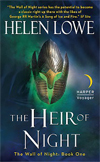
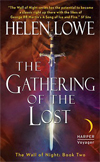
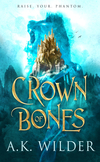
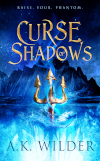
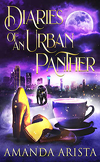
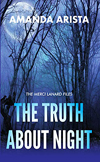

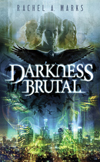
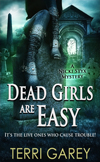
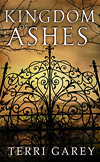
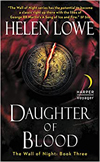
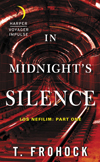

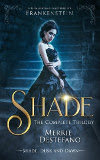
1 comment:
Great post, Teresa -- I think the blurb for Los Nefilim works and you've helped us understand why.
Post a Comment